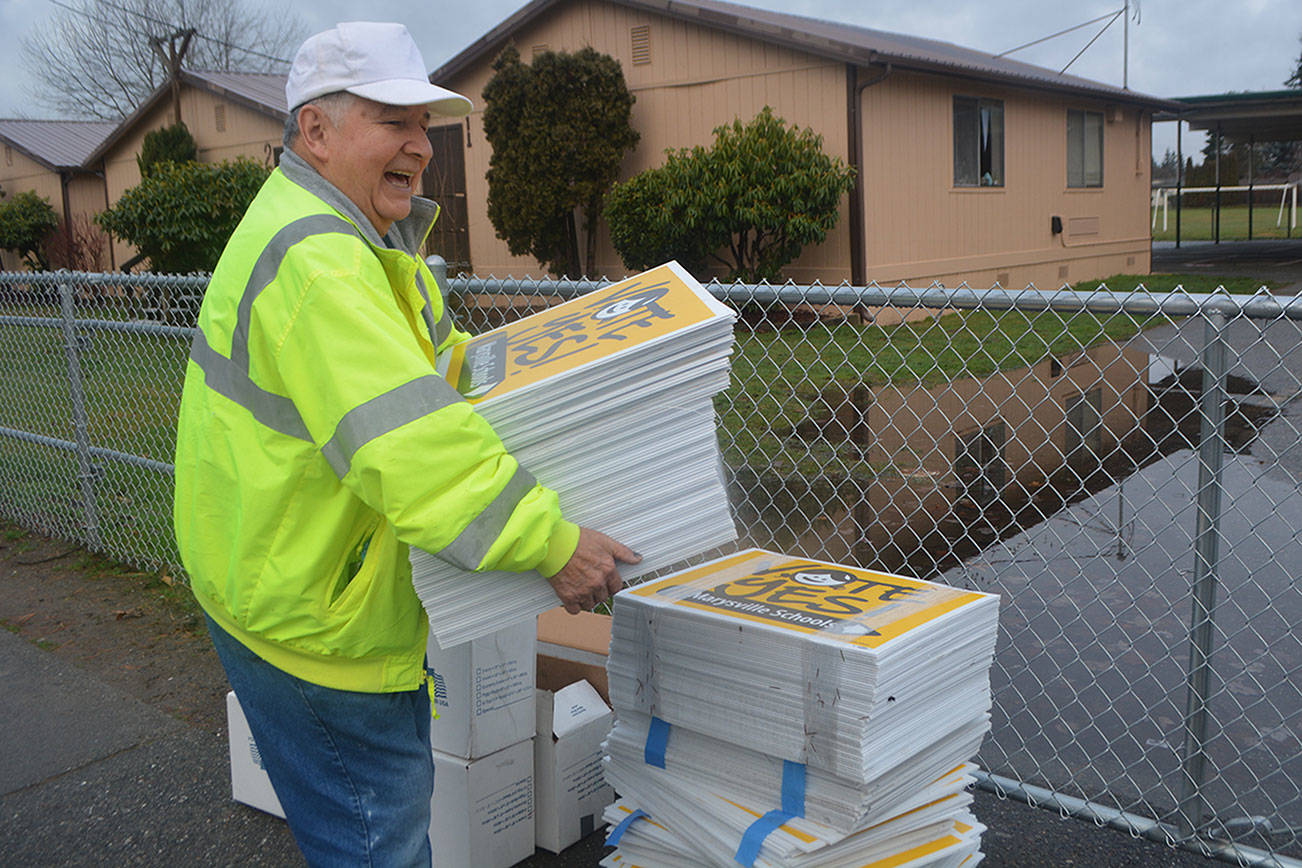TULALIP – Who better to talk about teen anxiety than students?
When three Mountain View High School students were asked, “What causes the most anxiety among high school students?” they responded in unison, “Homework.”
They were not just talking off the cuff. The three recently competed in an event where they did research and a speech on “Teen Anxiety.”
They surveyed their fellow students and found that 88.5 percent suffer from anxiety.
The girls – senior Selma Marin, junior Shayna Larson and sophomore Azura Nelson – said they chose the topic because they all feel it to some degree, as do their classmates.
They said they want to educate others about the most-common form of mental illness so people will talk about it and find solutions.
“We are personally effected by this on a daily basis,” Marin said.
Larson added: “It effects our school a lot. Not enough people are educated about it.”
The three wrote a six-minute speech and Powerpoint presentation with the help of Leadership teacher Judy Whitman. “She was amazing, just like another teammate,” Nelson said.
Whitman added: “If they would have had more time to work on it, I have no doubt they would have taken gold,” at the recent Family Career Community Leadership of America competition in Lake Stevens. They placed second.
Marin, who competed in the same event last year with Larson, said the competition was later in the year previously, so, “We had a shorter time to cram it in.”
Along with at school, they would meet on weekends to practice. Whitman even took them to a coffee house. “You have to make it fun,” she said.
She also bought them outfits.
“They have a strict dress code” for the FCCLA competition,” she said, adding: “Too often they say, ’No,’ even though they want to, because of money. Luckily, I have an understanding husband.”
Whitman said the topic was a good one because not enough is being done to address mental health in schools, which leads to kids dropping out and other problems. She said her school is making headway by having a mental health counselor – the first in her 37 years of teaching, she said.
Marin said she personally started having problems with anxiety two years ago. She stopped going to school because she would get sick. People would tell her to “suck it up” and “calm down.”
“You should never say that,” Nelson interjected.
Marin was going to a bigger school so she transferred to MVHS and is doing better. “You get a lot of help here,” Marin said.
Larson also didn’t like a big school.
“There’s a big crowd, and you feel like all eyes are on you,” she said, adding she also felt like she was always being judged. “It was hard to speak, and I would shut down.”
One of her greatest fears, ironically, was public speaking. But she gained confidence and competed last year with Marin to win gold, just missing going to state by one point.
Nelson had anxiety as a freshman at Marysville-Pilchuck High School, basically because it was so big. Her attendance was “super bad,” and she ended up not going to school. She decided on an alternative school so she could get more one-on-one instruction.
Nelson said the homework burden is real. Many students have to have jobs, and many also like to be in extracurricular activities. “There are so many responsibilities, and so little time – it’s overwhelming,” she said.
In their speech they say 80 percent of students with anxiety are not treated, and when it goes to the extreme it can lead to suicide, which is the No. 2 killer of teens nationwide. The speech also says one-quarter of all students have anxiety nationwide – 30 percent girls and 20 percent boys. It is treated with psychotherapy and medications. It adds that anxiety is natural but needs to be managed. When dealing with an anxious person, be patient, reassure and listen. “Lift someone up with a kind word or action,” it says.
The Powerpoint states that people can deal with anxiety by taking time for themselves doing something they like. It also says to love yourself, don’t compare yourself to others, don’t strive for perfection and be positive even when making a mistake.
“Worrying doesn’t take away tomorrow’s troubles, it takes away today’s peace,” it concludes.








